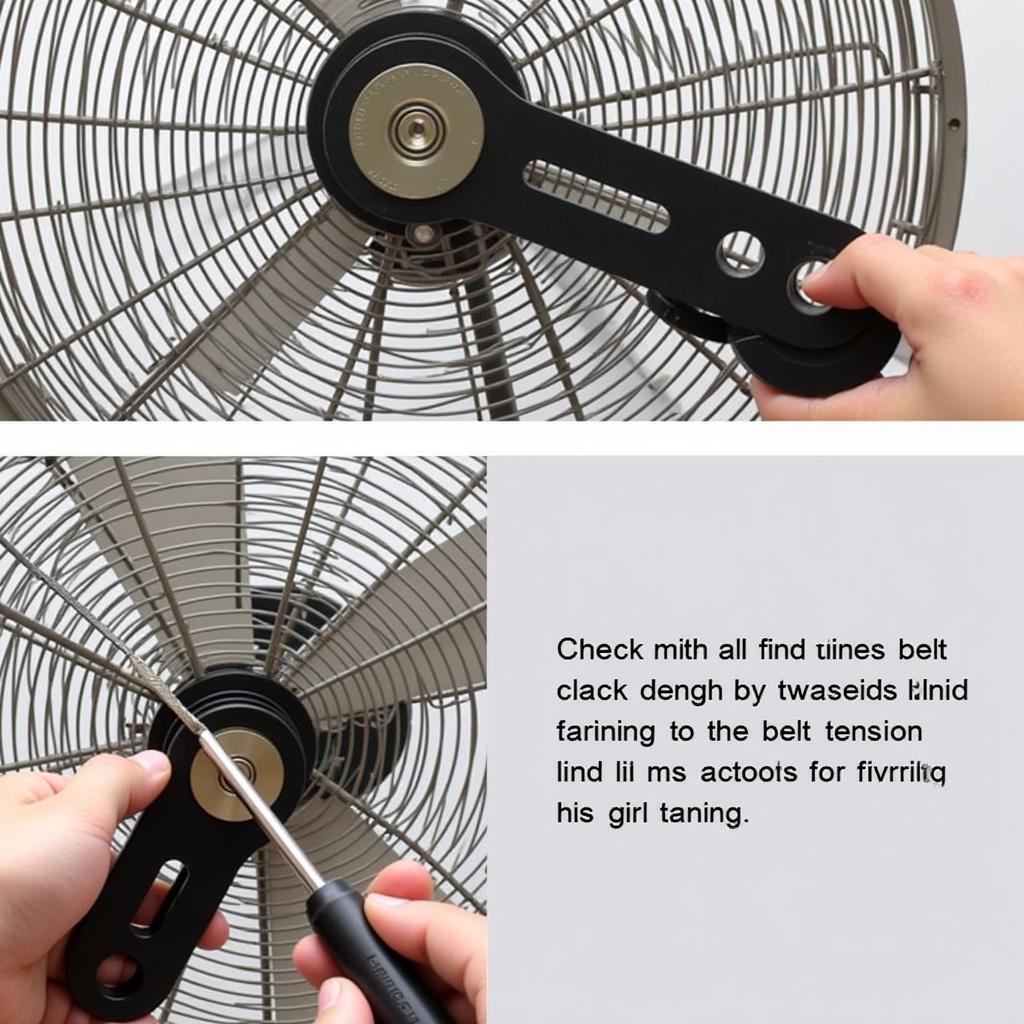Belt Driven Fans are essential components in various industrial and commercial applications, offering a powerful and efficient solution for air circulation and ventilation. From cooling large spaces to exhausting fumes, these versatile fans play a crucial role in maintaining optimal environments. This guide delves into the intricacies of belt driven fans, exploring their mechanics, advantages, applications, and key considerations for selection and maintenance.
How Belt Driven Fans Work
Unlike direct drive fans where the motor is directly connected to the fan impeller, belt driven fans utilize a belt and pulley system. This system allows for greater flexibility in speed control and allows the motor to operate at its optimal speed while driving the fan at a different speed, maximizing efficiency. The motor drives a belt connected to a pulley attached to the fan shaft. This indirect connection allows for a wider range of speed adjustments and can also accommodate larger fans and higher airflow requirements. You might consider a car cooling fan for automotive applications, though these typically employ direct drive systems.
What are the core components of a belt driven fan system?
The key components include the motor, belt, pulleys, fan shaft, and impeller.
Advantages of Belt Driven Fans
Belt driven fans offer several advantages over direct drive fans, making them a preferred choice in certain applications. Their ability to adjust speed makes them adaptable to fluctuating airflow needs. They also tend to be more durable and easier to maintain due to the isolation of the motor from the fan vibration. Furthermore, belt driven fans often have a longer lifespan due to the reduced stress on the motor. For situations requiring high airflow rates, such as in large industrial facilities, belt driven systems are often the most effective solution.
Why are belt driven fans preferred for high airflow applications?
The belt and pulley system allows for larger fan sizes and higher airflow rates compared to direct drive fans.
 Belt Driven Fan in Industrial Setting
Belt Driven Fan in Industrial Setting
Applications of Belt Driven Fans
Belt driven fans are employed in a wide range of industries and applications, including HVAC systems in large buildings, industrial exhaust systems, agricultural ventilation, and power generation. Their versatility makes them suitable for both indoor and outdoor environments. For specialized applications like ventilation in confined spaces, a belt driven axial fan might be a suitable option. You could also explore belt driven axial flow fans for similar applications.
Where are belt driven fans commonly used?
They are commonly found in HVAC systems, industrial exhaust systems, agricultural ventilation, and power generation facilities.
Selection and Maintenance
Choosing the right belt driven fan requires careful consideration of factors like airflow requirements, static pressure, operating environment, and noise levels. Regular maintenance, including belt tensioning, lubrication, and cleaning, is crucial to ensure optimal performance and longevity. For applications requiring specific safety features, such as in potentially hazardous environments, specialized fans like an exhaust fan for confined space should be considered. For basic home ventilation, a crack only fan might be sufficient.
What maintenance tasks are essential for belt driven fans?
Key maintenance tasks include belt tensioning, lubrication of moving parts, and regular cleaning to remove dust and debris.
 Belt Tensioning on a Belt Driven Fan
Belt Tensioning on a Belt Driven Fan
Conclusion
Belt driven fans provide a reliable and efficient solution for a variety of air circulation and ventilation needs. Their versatility, durability, and ease of maintenance make them a valuable asset in numerous industrial and commercial settings. By understanding their mechanics and key selection criteria, you can ensure optimal performance and longevity for your belt driven fan system.
FAQ
- What is the main difference between belt driven and direct drive fans?
- How do I determine the correct belt tension for my fan?
- What are the common causes of belt slippage?
- How often should I lubricate my belt driven fan?
- What are the signs of a worn-out fan belt?
- How can I reduce noise levels from my belt driven fan?
- Where can I find replacement belts for my specific fan model?
Common Scenarios and Questions:
Scenario: A belt-driven fan is making excessive noise.
Possible Questions: Is the belt slipping? Are the bearings worn out? Is the fan impeller hitting something?
Scenario: The airflow from a belt-driven fan is reduced.
Possible Questions: Is the belt tension correct? Is the fan impeller clogged with dust or debris? Is the motor running at the correct speed?
Scenario: The belt on a belt-driven fan keeps breaking.
Possible Questions: Is the belt tension too tight? Is the belt the correct size for the fan? Are the pulleys aligned correctly?
Further Resources
You might also find helpful information on our website related to axial fans and other ventilation solutions.
For assistance, please contact us at Phone Number: 0903426737, Email: fansbongda@gmail.com or visit our address: Lot 9, Zone 6, Gieng Day Ward, Ha Long City, Gieng Day, Ha Long, Quang Ninh, Vietnam. We have a 24/7 customer support team.


